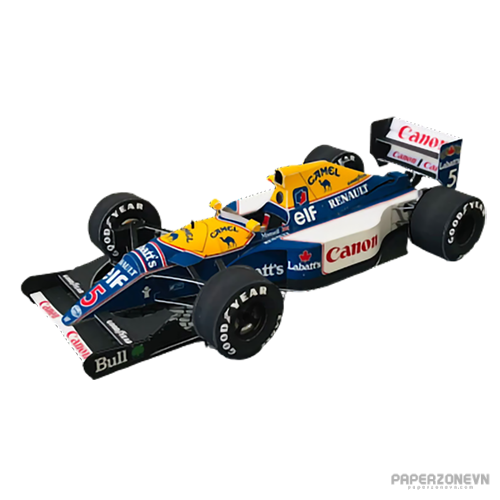- Thumbnail
-

- Resources
- Received from the internet
- Author
- ABC
- Printed File Format
- JPG
- Page(s)
- 3
- Instruction Format
- Image
Sponsored:
Sponsored 2:
Williams FW14B papercraft

The Williams FW14 car was born out of necessity, as the 1989 and 1990 seasons had proven competitive for Williams, but they had underachieved in their own and Renault's eyes. By 1992 the FW14B featured semi-automatic transmission, active suspension, traction control and, for a brief period, anti-lock brakes. With the aerodynamics as designed by Newey and the active suspension invented by designer/aerodynamicist Frank Dernie, the car was far ahead of its competitors, such as the McLaren MP4/7A, Ferrari F92A or Lotus 107, and it made for a strong package. The FW14B was so successful that its successor (the FW15), which was available mid-season in 1992, was never used.
Even though there are instructions included, you can still watch the video playlist for assembling this papercraft.

The Williams FW14 car was born out of necessity, as the 1989 and 1990 seasons had proven competitive for Williams, but they had underachieved in their own and Renault's eyes. By 1992 the FW14B featured semi-automatic transmission, active suspension, traction control and, for a brief period, anti-lock brakes. With the aerodynamics as designed by Newey and the active suspension invented by designer/aerodynamicist Frank Dernie, the car was far ahead of its competitors, such as the McLaren MP4/7A, Ferrari F92A or Lotus 107, and it made for a strong package. The FW14B was so successful that its successor (the FW15), which was available mid-season in 1992, was never used.
Even though there are instructions included, you can still watch the video playlist for assembling this papercraft.
Sponsored: Google Advertising
